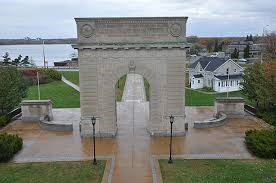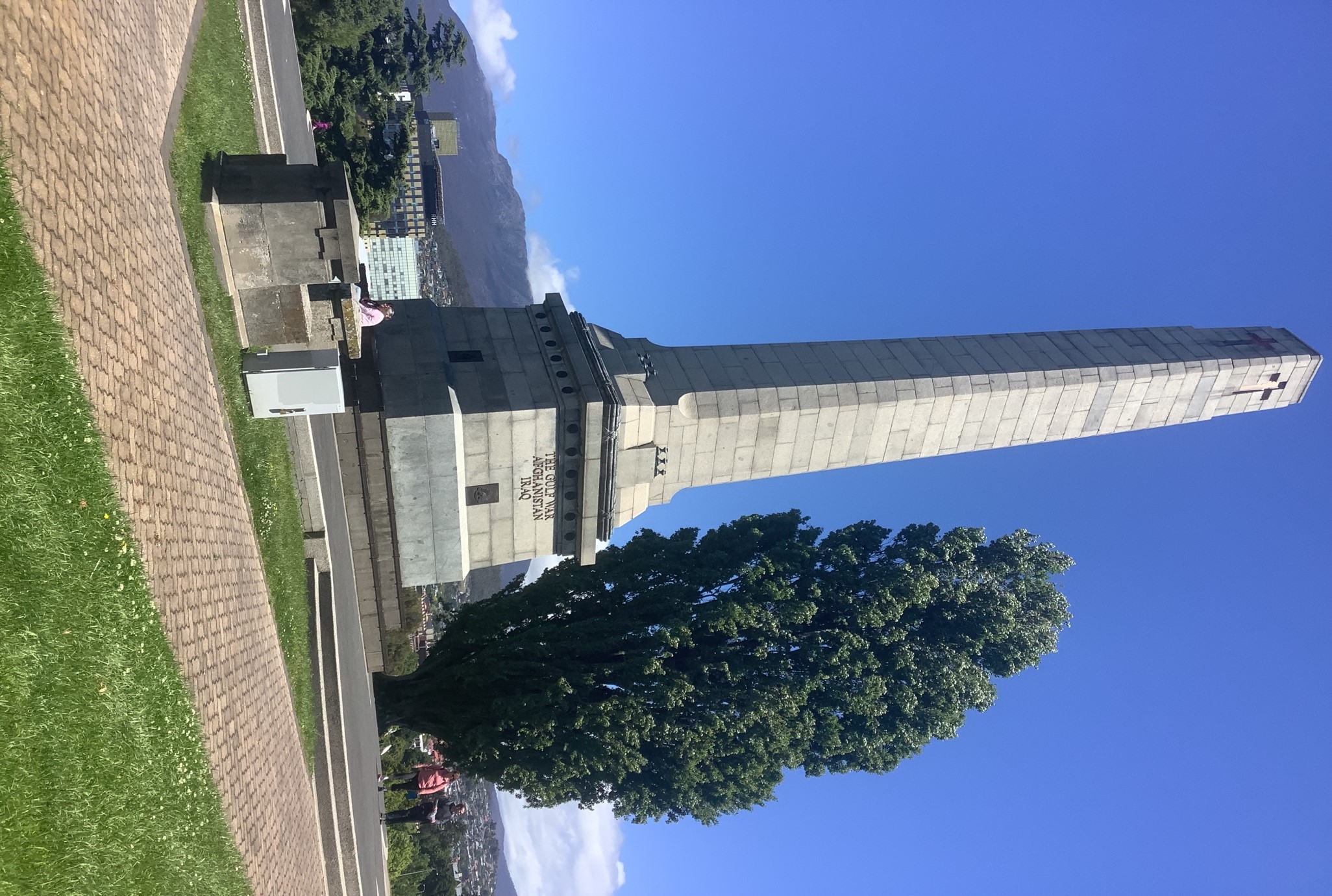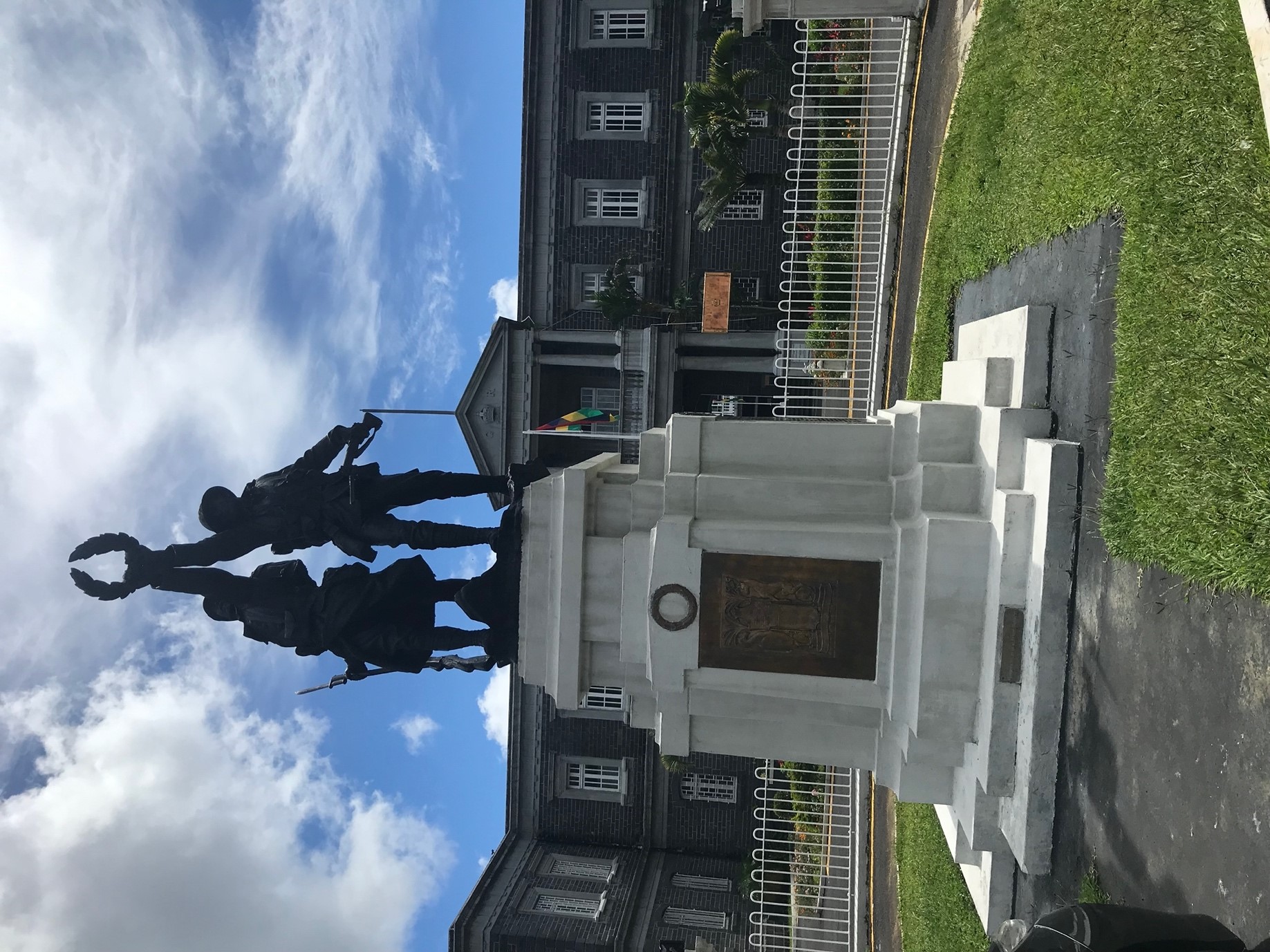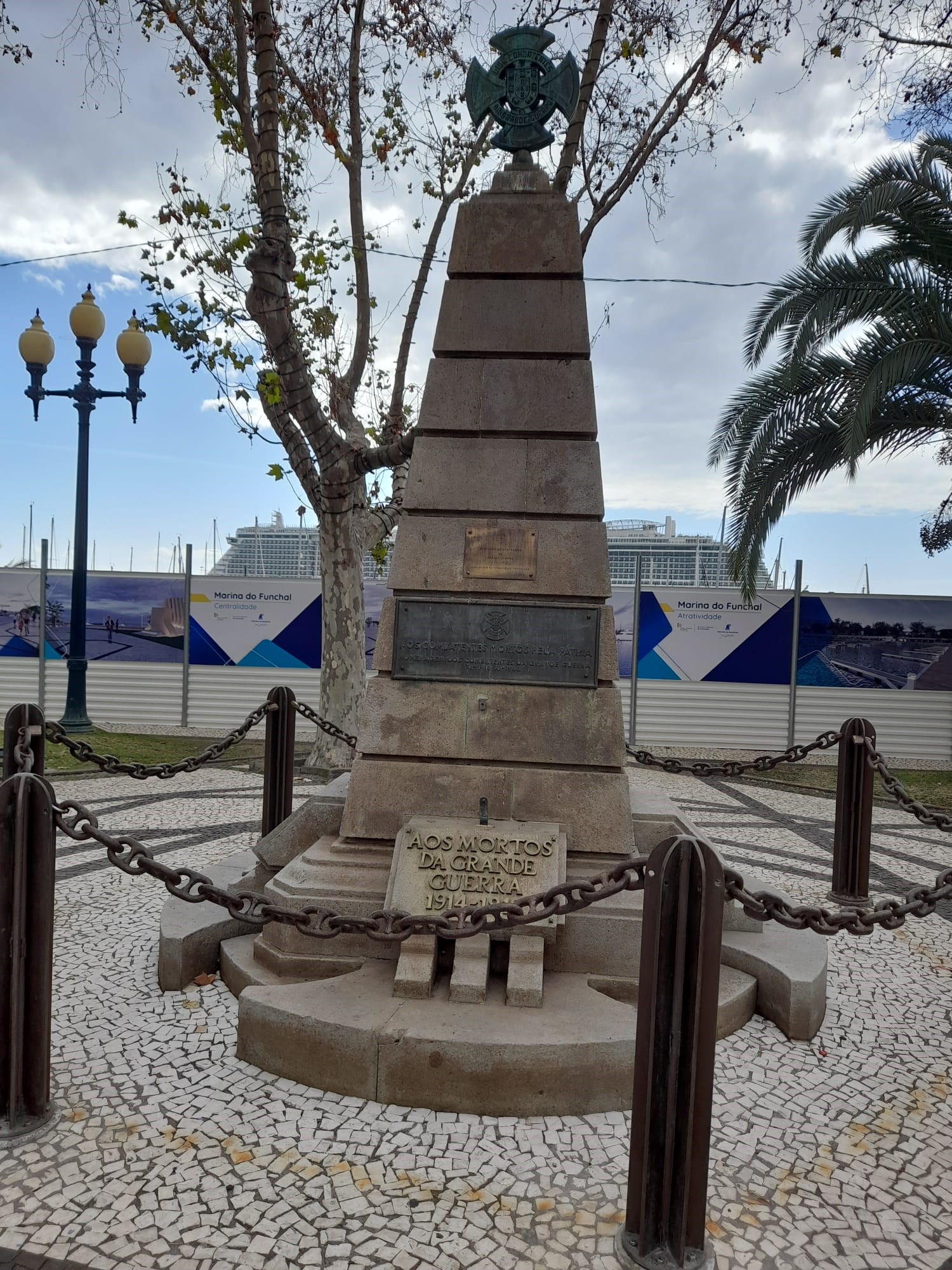Great War memorials from around the world
Eric Hunter
With the lifting of travel restrictions following the pandemic our members and fellow Great War enthusiasts are again traveling abroad. The war was truly worldwide and remembered by many memorials in numerous countries.
Terry Jackson was on his travels and he was in Kingston, Ontario and has sent a picture of the very impressive Byng Arch. Terry writes:
On 25 June 1923, as part of that year's Graduation Day activities the Governor-General of Canada, His Excellency Viscount Byng, of Vimy, officially laid the cornerstone of the Memorial Arch. Within the stone in a sealed copper box, were nominal rolls of Cadets and Staff, pamphlets concerning the Arch, the RMC Review of May 1923, Canadian coins and stamps and the Roll of Honour of the College. Designed by architect John M. Lyle, Esq., of Toronto and funded by the Royal Military College Club of Canada with monies raised from ex-cadets and other friends of the College.
The Arch was unveiled on June 15, 1924, by Mrs. Joshua Wright, mother of cadet 558 Major G.B. Wright, DSO, RCE, and 814 Major J.S. Wright, who gave their lives in the First World War. The details of the ceremony are engraved on the cornerstone.
The Memorial Arch stood completed in 1924 and commemorates the ex-cadets who had lost their lives in the Great War and earlier conflicts. The stones around the Arch continue to bear the names of cadets from the college that have fallen in conflict, in peacekeeping or other causes while in service. It is 46 feet high and 42 feet wide and is constructed of granite and Indiana limestone. On the back and front pedestals are low reliefs, exquisitely carved, of ancient armorial designs. The cost of the structure was about seventy thousand dollars.
The Arch was dedicated to the memory of all “the Ex-Cadets of the Royal Military College of Canada Who Gave Their Lives for the Empire.” The names begin with No. 52 Captain WG Stairs who died during the Emir Pasha Relief Expedition 1887 – 1890; followed by No. 62 Captain WH Robinson who died in West Africa 1892. There are then five names of Ex Cadets who were killed during the Boer War 1899 – 1901, followed by those from 1914 – 1918.
On September 25, 1949 two granite pylons, one on each side of the Arch, were unveiled by the Governor General, Viscount Alexander of Tunis, on which are recorded the names of those Ex Cadets who gave their lives between 1926 and 1945. In 2006 another plaque, donated by former Commandants, was attached to the East pylon. On it the names of Ex Cadets who have died on active service since 1945 are recorded.
Malcom Jackson sends a photograph of the War Memorial overlooking the harbour in Hobart, Tasmania. The pines that surround it have come from Gallipoli.

Gerry Bhim has sent in a photograph from Port Louis in Mauritius. The islands history is shared with the French who also colonised the island at one time. Many residents held a deep affection to France and when war broke out many enlisted in the French Army. Subsequently the memorial shows both a British Tommy and a French Poilu.

Eric Hunter sent this picture from Funchal, Madeira. It is often forgotten that Portugal was one of Britain’s main allies in the Great War sending troops not just to the Western front but also to East Africa.

